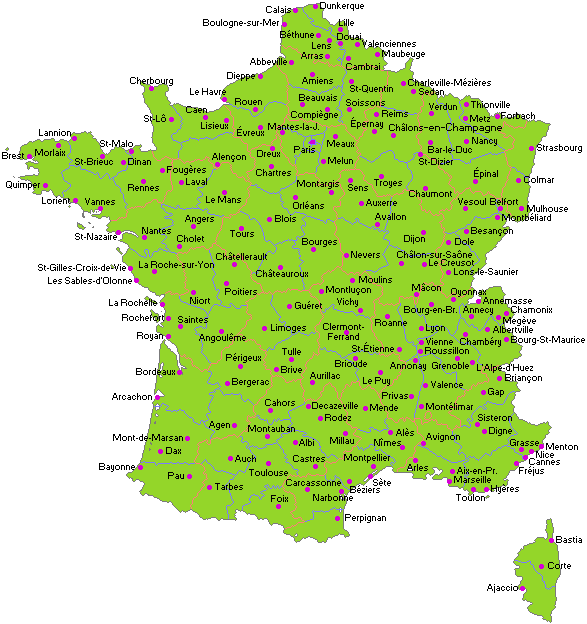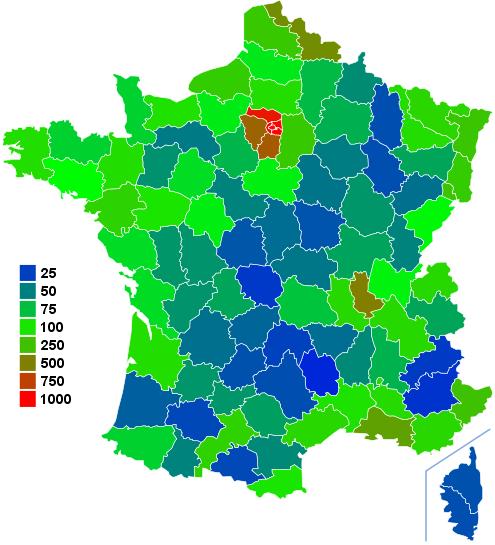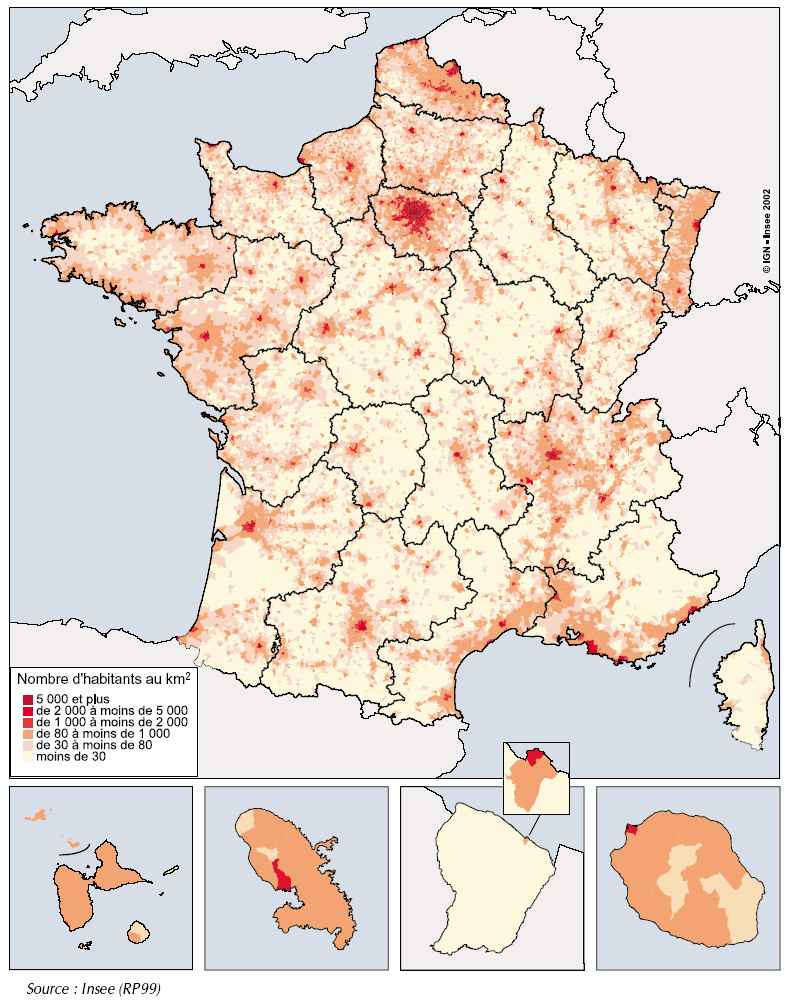|
On 1 January 2011, France had a population of 65,821,885 inhabitants (with all nationalities) for a total area of 675,417 km² (metropolitan and overseas).
Population is distributed as follows:
- 63, 136, 180 live in metropolitan France
- 1,890,705 live in the overseas departments (DOM)
- 795 000 live in communities overseas (COM) (rarely included in most statistics).
Metropolitan France has a population density of 115 inhabitants per square kilometer and 97 inhabitants / km ² counting the overseas.
In comparison, on January 1 2010, the population of France was estimated at 65 447 374 inhabitants. In this study, population is distributed as follows:
- 62 793 432 in metropolitan France
- 1 873 942 in the overseas departments (DOM)
- 780 000 in communities overseas (COM)
In 2010 the French population is growing by 356 000 compared to 2009. It was an increase of 366 500 persons as compared to 2008.
Northern France is the most populated with about 40 million people (or 2 / 3 of the population) against approximately 22.5 million in the South (or 1 / 3 of the population) (metropolitan France only).
Within the European Union (EU) Demography of France stands out for the life expectancy of women (84.23 years 2008 estimate) which is the highest in Europe and a fertility rate (2.02 in 2008 and 1.99 in 2009) the highest in Europe.
While during the years 1980 and 1990 the demographic growth of metropolitan France was worn mostly by the urban peripheries, now all types of areas are benefiting. In 2006, although the population is still centered around Paris and major cities, some remote areas of cities are becoming denser strongly.
The largest cities of France are in order: the city of Paris, the city of Lyon, the city of Marseille, the city of Lille, the city of Toulouse, the city of Nice, the city of Bordeaux, the city of Nantes, the city of Strasbourg and the city of Toulon.
|
Urban areas of France
| |
Here you will find the map of population density of France, the map of cities of France and finally the detailed classification of the 5 main french areas: Paris, Lyon, Marseille, Lille, Toulouse
The urban area is a concept developed by INSEE to understand and describe the organization of the geographical area of France.
An urban area is defined by INSEE as a continuum formed by an urban center and its suburban ring. When a significant portion of the workforce resident working in another municipality in the urban area, these towns are said "monopolarisées".
This definition was developed between 1994 and 1996 and applied for the first time in the 1999 census, replacing the concept of settlement area and industrial areas (ZPIU) that became too small discriminant.
Here are the top 5 French main areas:
|
|
| |
Map OF FRANCE - URBAN AREA
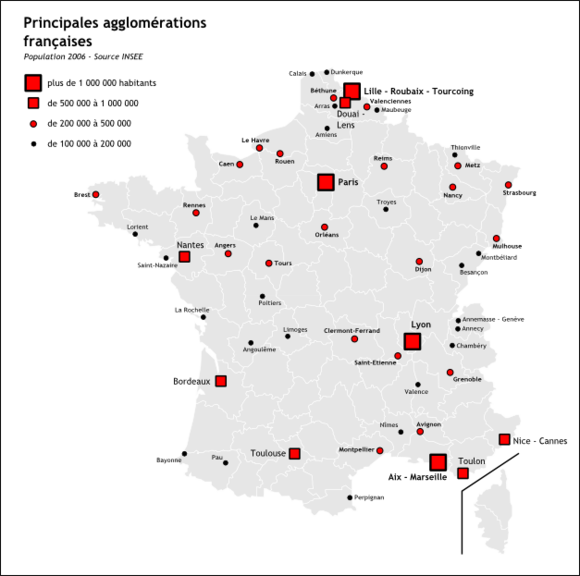
MAP OF FRANCE CITIES
|
|
|
|
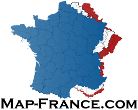
 French Version : Villes de France
French Version : Villes de France
 French version : Villes françaises | Carte de France
French version : Villes françaises | Carte de France
